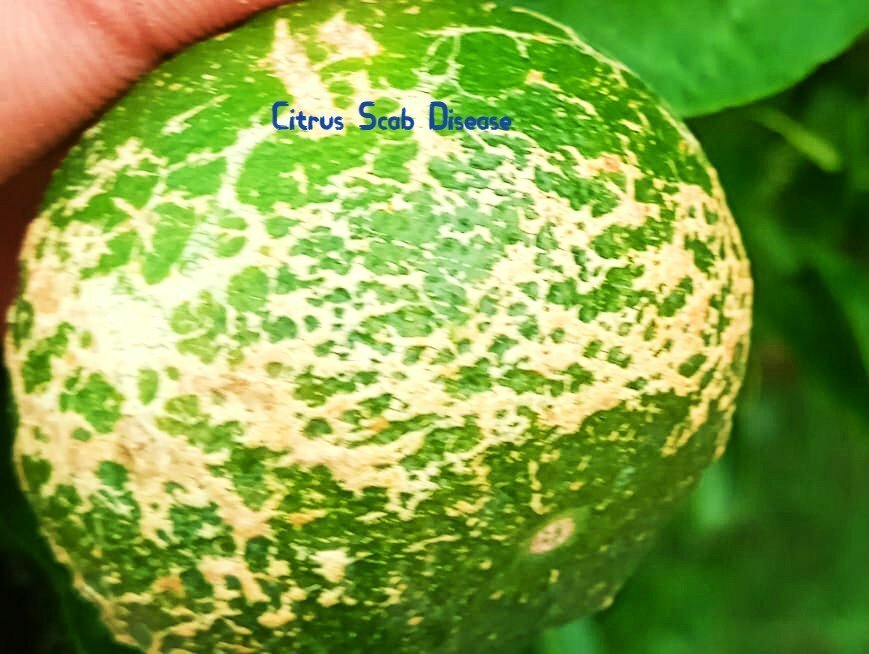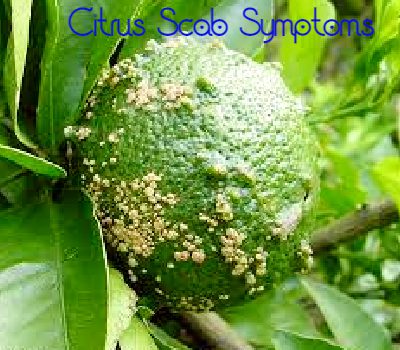Citrus Scab Disease
Citrus scab disease is also known as lemon sour or cancer of lemon. This is a major disease in citrus gardens. Moreover, symptoms of scab disease Leaf and fruit early scab dark brown spots are a mixture of fungal and host tissue. Fresh and young leaves spot casually like young citrus cankers and may have a slight water-soaked edge. As spots develop on fruit and leaf then these small raised pink spots become more visible and may form narrowed declines in the vicinity. As the spots grow up, they become wartlike patches. Spot’s colour may increase too yellowish-brown and ultimately to a filthy. In this article, we will discuss citrus scab treatment.
Scab Disease Symptoms

Symptoms of the scab disease attack leaves, fruit, and twigs, and produce slightly raised, sporadic scabby, or wartlike outgrowths. The scabs are dim or pinkish from the get-go and become more obscure with age. They are more normal on lemon natural products than leaves. The raised bumps related to scabs can be mistaken for side effects brought about by the disease botrytis or with wind rub scraped spots.
Citrus Scab Disease Control
Defensive citrus scabs copper spray is the main item enlisted for treatment & chemical control scabs. Since copper is a protectant fungicide the whole organic product surface requirements to have a ceaseless covering of copper to be safeguarded from disease by the parasitic spores. This defensive copper covering doesn’t extend as the organic product develops so unprotected holes on the natural product surface will happen and these regions will be vulnerable to disease (in the event that conditions are favorable). Along these lines, the defensive copper layer might be reapplied to the developing organic product during the powerless stage.
Citrus Scab Treatment
One more issue with controlling scabs in lemons is the drawn-out blooming and various trimming propensity for these trees in hotter regions and the choice of when to apply the defensive splashes. In regions where is just a single fundamental harvest a year, a control system is less complex to carry out. In general, control is a blend of both administration rehearses and defensive copper showers. Trees should be consistently pruned to keep them open and liberated from deadwood. This will assist with decreasing the wellspring of infection spores, taking into account better air development inside the tree and better shower inclusion inside the tree. In seaside regions on the off chance that trees are not routinely pruned then they ought to be supplanted following 10-12 years in view of how much deadwood and ensuing sickness load in the trees.
Citrus Scab Biological Control
Biological control of citrus scab is typically achieved through the introduction of certain species of beneficial insects. These include the scab mite (Aceria sheldoni), the citrus mealybug destroyer (Cryptolaemus montrouzieri), and the mealybug ladybird (Cryptolaemus montrouzieri). These beneficial insects feed on the scab fungus, thus reducing the amount of scab present on the fruit. Additionally, other beneficial organisms such as the citrus leafminer larvae (Phyllocnistis citrella) can be released to prevent the scab from spreading. Finally, certain fungicides can be used to prevent the scab from taking hold, although these should be used with caution as they can have adverse effects on the beneficial insects.
Infection Period of Scab Disease
As soon as a leaf emerges from its bud and until approximately 25% of its development has occurred, it is susceptible to infection. Infection in young lemons can occur anywhere between halfway through petal fall and one year later. To germinate and infect a host plant, scab spores require a soaking period of at least 4 hours, whether from rain, overhead irrigation, or spraying, or 1-2 hours followed by 3–4 hours over the next 24 hours.
It has also been noted that spray treatments that wet the leaves briefly but do not contain fungicides promote infection. Although temperature does not appear to have a major impact on the progression of the disease, spores germinate more quickly in warmer surroundings. Citrus scab attacks the growth flush and fruit rind, with the severity of infection determined by the number of spores on the trees and the number and frequency of soaking periods. Since lemon trees bloom for such an extended period of time, it can be difficult to spray them at the optimal moment.
What is Lemon Scab?
Lemon Scab Disease is one of the most important sour of citrus fruit diseases. As a result, the citrus industry suffers a loss of 22 to 50 percent. The Scab disease of citrus is spread by a fungus bacteria, Elsinoe Fawcetti.

Citrus Scab Management
The disease attacks the twigs, branches, and leaves. Board X mixture should be sprayed and applied at the time of flowering for citrus scab treatment.
Citrus scab Chemical Control
Citrus scab disease chemically controls the method; should be chemically controlled by spraying copper hydroxide. Copper hydroxide spray can easily control scab disease. In addition, this spray should be applied before the onset of cold weather as the fungus is more aggressive in humid weather.
